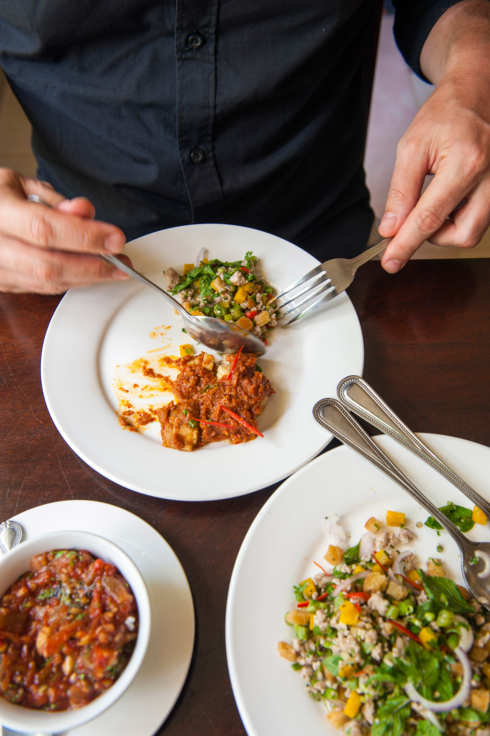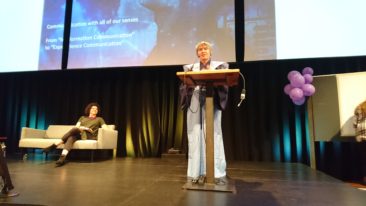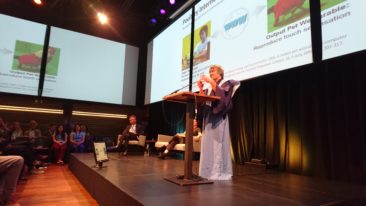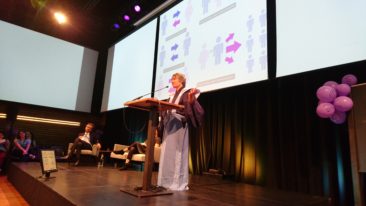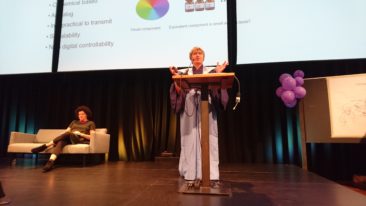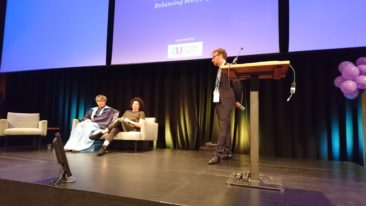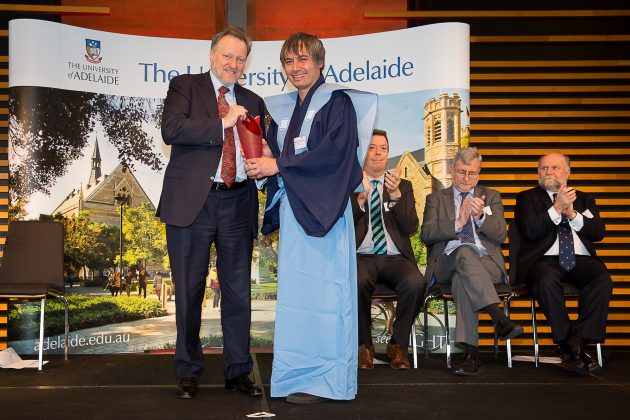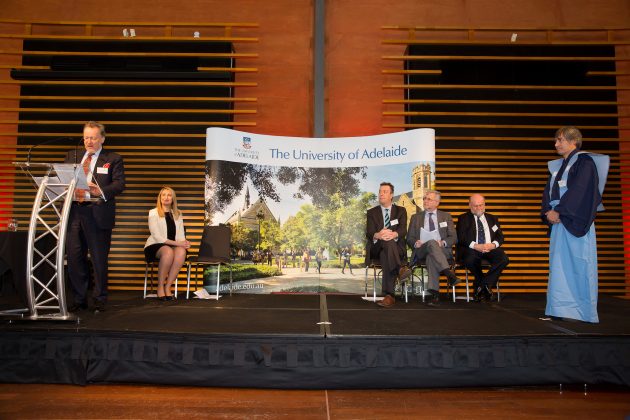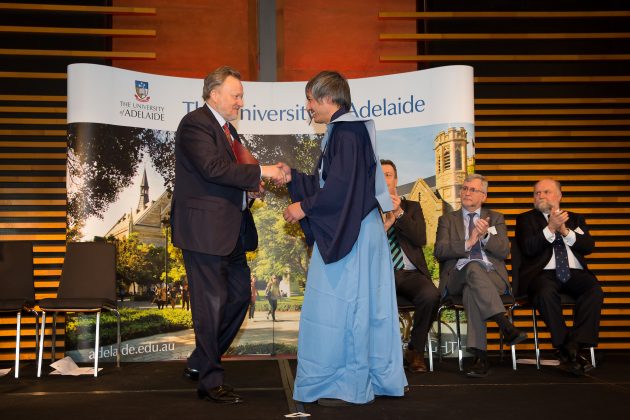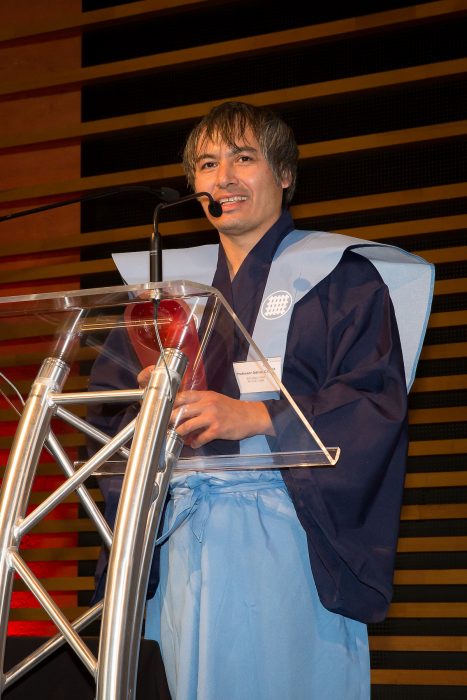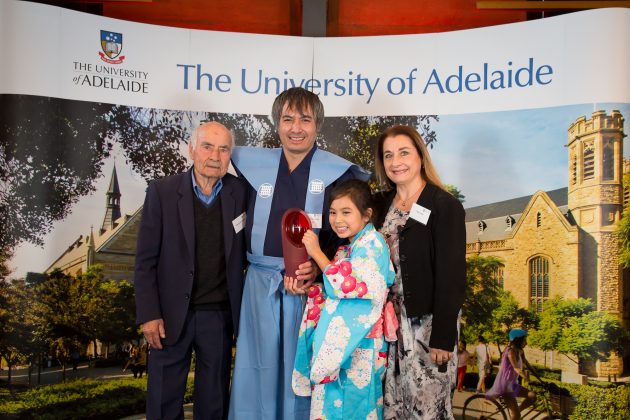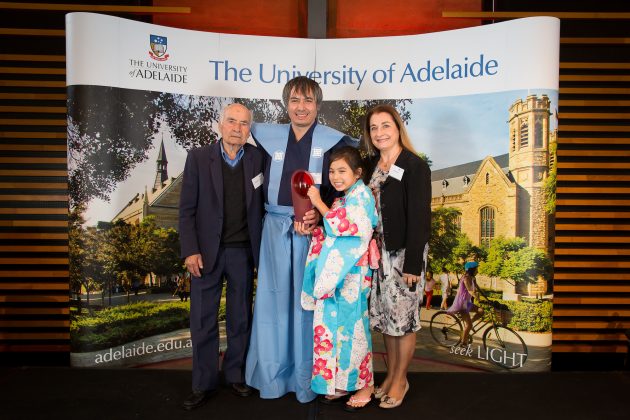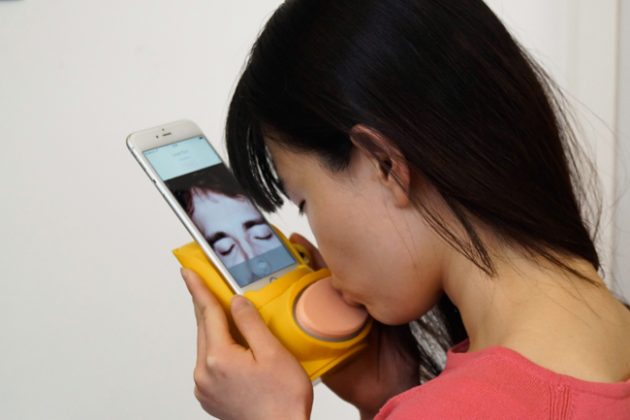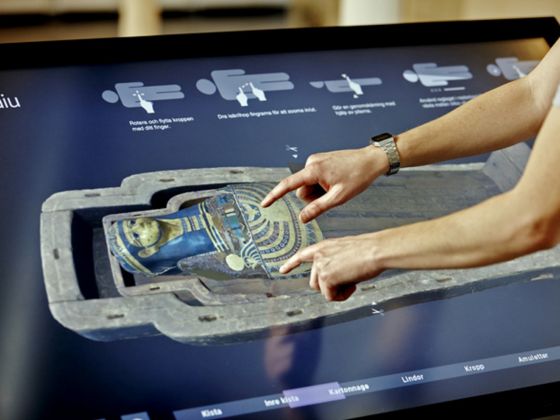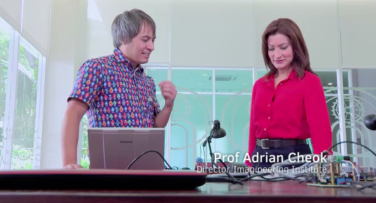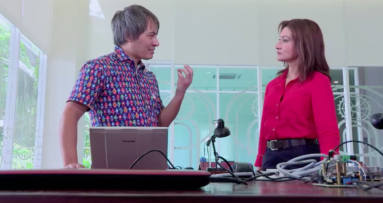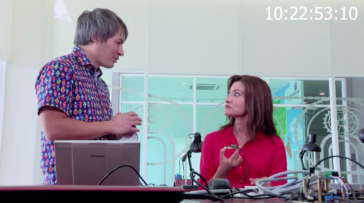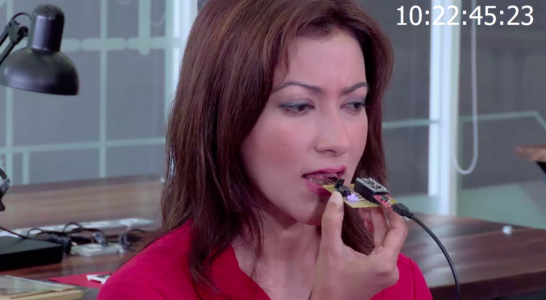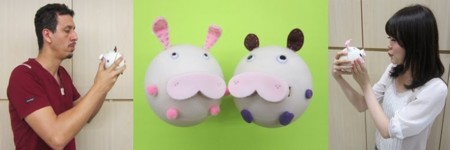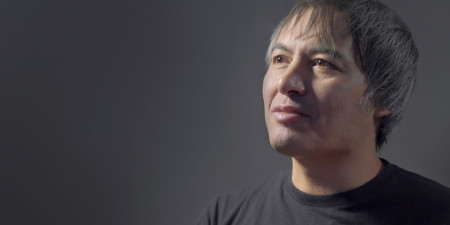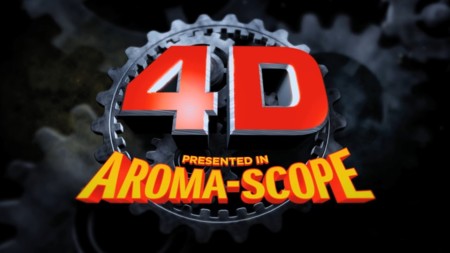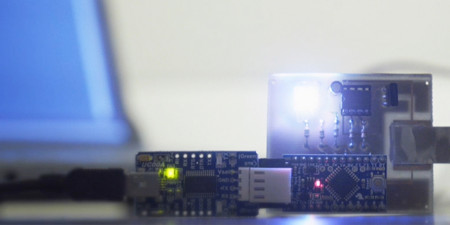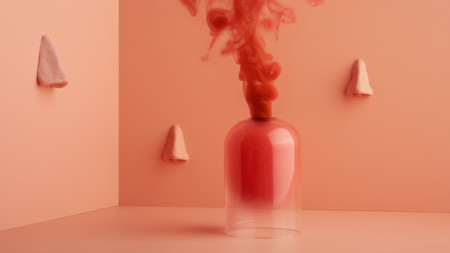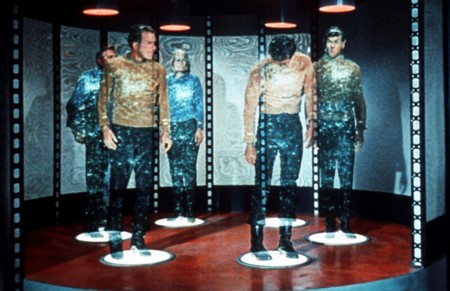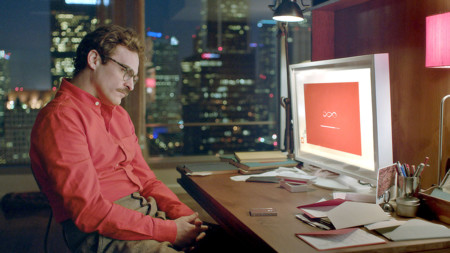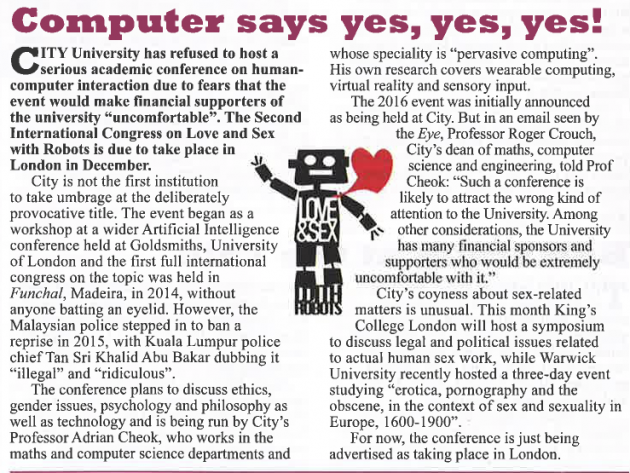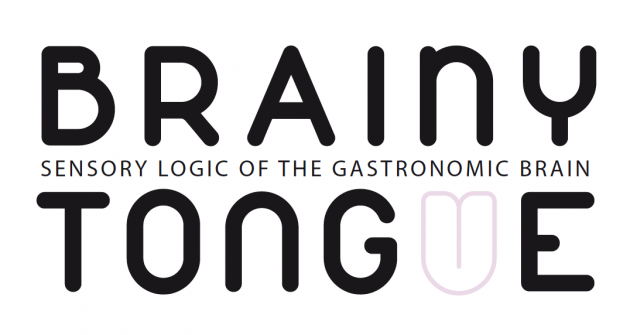Conseguir transmitir los 5 sentidos a través de una conexión remota. Esa es la obsesión del australiano Adrian David Cheok, profesor de la Universidad de Singapur, quien gira por todo el mundo enseñando sus inventos para probar sabores a través de chips, oler e incluso darse besos. Su tesis es sencilla:convertir Internet en un espacio conectado… emocionalmente. Digitalizar los 5 sentidos —olfato, vista, oído, tacto y gusto— , replicando el complejo mundo real a través de hardware.
Digitalizar los sentidos supondría un cambio radical en nuestra forma de comunicarnos. El primer progreso de Cheok en este campo gira en torno al tacto. Siguiendo los pasos de Kissenger, aquel robot de la compañía Lovotics a través del que podíamos mandar besos, el device de Cheok es un rectángulo de silicona, de color rosado, con una clavija para fijar a la base del smartphone. Mediante conexión WiFi puede comunicarse con un aparato análogo.
El dispositivo dispone de sensores de presión: un algoritmo calcula en tiempo real los índice de presión y dirección cuando se produce el beso. Pero también podemos usarlo, simple y llanamente, para transmitir sentimientos positivos, de buena suerte, para saludar, o para felicitar el cumpleaños a nuestra abuela. Si no queremos cerrar los ojos, a través de la pantalla del móvil vemos la frente o el rostro de la persona besada. El cacharro en cuestión es lavable y tiene la forma de unos labios estándar. No son los de tu pareja ideal, no tienen ningún cálido aroma, pero la textura tampoco se asemeja a una simple tubería de PVC.
Cheok establece un paralelismo interesante: antiguamente copiábamos nuestras canciones favoritas a dos o tres amigos, y las pasábamos en cintas. Ese fue el nacimiento de la digitalización. Pero ahora todo el mundo puede descargar la canción en un par de segundos, podemos chivar un descubrimiento emergente y que se convierta en algo de popularidad mundial en varios días. Cheok persigue esa comunicación, esa forma de transmitir información de forma más directa, a la antigua usanza.
Hay algo psicológico en el contacto. Las relaciones a larga distancia se rompen por esta brecha. Uno puede pasarse horas colgado del Skype y, aunque mejora sobremanera la malinterpretación y deformación de los chats, sigue siendo algo frío. Cuando cuelgas la llamada sientes que un silencio se apodera de ti. La emociones son difíciles de asir. Y llevamos un montón de años intentándolo.
De 100 años a 10: la carrera por digitalizar los sentidos
Como señala el propio Cheok, la digitalización del audio nos tomó un siglo, 50 años hacer lo mismo con el vídeo —y ya hemos llegado hacia la representación realista del mismo, mediante el HDR—. «Digitalizar el olor o el sabor no nos llevará más de 10 o 15 años, debido a la aceleración de la tecnología».
La digitalización de los olores o sabores siempre ha estado ahí de alguna u otra manera. Dejar una rosa disecada entre las páginas de algún pasaje concreto: de las cartas aromáticas a los cuentos de Gerónimo Stilton. En la industria cinematográfica la digitalización de olores fue bastante explícita y caótica. El suizo Hans Laube presentó en la Expo Mundial de Nueva York de 1939 ‘Scentovision’, un sistema que añadía banda aromática a la película. De esta manera, dosificando pequeñas dosis con tubitos escondidos tras las butacas de cada espectador, se amplificaría el poder narrativo de la obra. No llegó a mayores.
El productor de Minneapolis Michael Todd hizo lo propio, siguiendo las pesquisas de su padre, y presentó ‘Smell-O-Vision’ bajo el eslogan «¡Primero se movieron (1895)! ¡Después comenzaron a hablar (1927)! ¡Ahora huelen!». Fue un fracaso que nunca llegó a despegar. Así las cosas, los años siguieron con tibias investigaciones. Terrence Malick apoyó una idea similar para su ‘The New World’ (2005), su relectura del mito de Pocahontas con aromas de tierra labrada y madera recién cortada. En 2013, varios cines de Nagoya (Japón) proyectaron ‘Iron Man 3’ recurriendo la tecnología 4DX o, lo que es lo mismo, una mezcla de vídeo 3D apoyado con efectos físicos —luz estroboscópica, niebla, aire caliente—, junto a olores dispersados por los conductos de ventilación.
Fuera del circuito comercial, la técnica para digitalizar olores (cromatografía) ha evolucionado por dipares derroteros. La empresa californiana Digiscent presentó hace algunos años iSmell, aplicación para incorporar olores a diferentes plataformas tecnológicas, como un simple correo electrónico. Un aparato receptor sintetiza el olor a través de un chip que asimila y analiza la huella que dejan los olores, y otro imprime y reproduce el olor asimilado. La compañía japonesa Chaku hizo algo similar en 2012 con las “narices electrónicas” y desarrolló Chat Perf, una forma de enviar olores a distancia mediante un atomizador conectado al puerto de iPhone, una suerte de smell-o-phone para pequeños consumidores.
Es fácil digitalizar el audio y la visión, son números
El audio y la imagen se miden en frecuencias: espectro visible, audible, y bits de resolución. Ya se sabe: los 8 bits de color hacen referencia a las 256 sombras de cada color primario: 256 de rojo, 256 de verde y 256 de azul. Con el audio sucede algo similar. Medimos la altura dentro del espacio audible —de los 20 Hertzios a los 20.000—, medimos el timbre sonoro, y medimos la intensidad, en decibelios. Con estos tres valores sabemos si el sonido de un fagot es “grave”, “metálico” y “suave”, basándonos en la potencia de la fuente sonora.
El gusto y el olfato se basan en moléculas sensoras. Son como una versión más hormoral y menos cerebral. Para interpretarlas no nos bastan los números, necesitamos una estimulación sensorial, que en el cerebro se traduce en electricidad. Es como enviar pequeños paquetes de datos codificados. El receptor revisa el matasellos y determina «este aroma a cítrico es agradable y fresco». Así que, como apunta Cheok en el vídeo, si queremos sentir esa conjunción aromática-olfativa, necesitamos condensar esa huella en bits de información y transmitirla eléctricamente a nuestro cerebro. Hablar su mismo idioma.
El problema de no poder digitalizar una molécula
El camino usual es acudir a la química. Como decíamos, las imágenes y los sonidos son señales de vibración y luz, mientras que los aromas y sabores son señales químicas. ¿Cómo podemos estimular estos receptores sin usar químicos? No podemos transmitir moléculas ni partículas a través de Internet. ¿O sí? Podemos detectar la diabetes mediante lectores de glucosa. El dulzor se convierte en una señal digital que el lector de insulina interpreta. Esa información la podemos exportar incluso a una tarjeta de memoria.
El problema de digitalizar una molécula deviene no tanto por la información misma de la molécula sino por cómo la interpretamos. Me explico: en el estudio de la cóclea se concluye que podemos detectar frecuencias limitadas, entre 20Hz y 20kHz, como decíamos. En el estudio del ojo sabemos cómo engañar y adaptarnos a sus características, con sus 7-8 millones de conos y 120 millones de bastones —receptores de color y luminancia, respectivamente—.
El olfato es otro cantar. Un humano sano puede detectar unos 1.200 millones de olores distintos. Y se memorizan mejor que cualquier otro recuerdo generado por una sensación. Las posibilidades combinatorias generan una posibilidad combinatoria prácticamente infinita. ¿Cómo sabemos qué moléculas descartar y cuáles seleccionar?
Ni siquiera podríamos construir un modelo estándar: no todas las personas tienen las papilas gustativas iguales. Aunque todo el mundo tiene receptores similares (dulce, salado, amargo, ácido y umami) la forma en la que interpretamos esas moléculas es única, como una huella dactilar.
Solución: estimular al cerebro con electricidad
De igual manera que hacen las conexiones sinápticas de nuestras neuronas, la única forma eficaz de interpretar correctamente estas moléculas a través de miles de kilómetros es mediante la estimulación eléctrica. Tal vez hayáis oído hablar del ‘brain hacking’, una forma de estimulación transcraneal de corriente directa. Consiste en aplicar, de manera controlada, pequeñas descargas con objeto de tratar patologías, estimular la memoria en personas con amnesia, u ordenar que cierta parte del cuerpo ejecute cierta función —como provocar el crecimiento de pelo—.
El profesor de ingeniería biomédica de la Universidad de NYC dejó bien claro, eneste artículo de Nature, que la versión casera y voluntaria de este hackeo es verdaderamente peligrosa. De hecho, aún no se conocen los efectos secundarios a largo plazo de estas prácticas. En este particular no estamos hablando de dopaje, estamos hablando de reinterpretación, de leer los olores como podríamos leer un libro. Y los dispositivos actuales aún no alcanzan esta meta con eficacia.
Cambiarás la manera de relacionarte con las personas
La idea de Cheok es eminentemente social. En el mundo real sólo puedes dar una abrazo a una persona, si logramos compartir los sentidos de manera eficaz podremos dar abrazos a miles, de manera simultánea. Su meta es replicar el comportamiento del mundo real a escala global.
Un ejemplo: la cultura del lenguaje emoji. Lo que en principio era mera anécdota y refuerzo para transmitir un mensaje eminentemente textual se ha convertido en el núcleo del mensaje. Podemos lanzar un emoji tan cargado de significado como cualquier carta. La teoría de Cheok sólo necesita algo de tiempo extra. Como seres emocionales y sociales, la comunicación seguirá más allá de cualquier forma de digitalización, de los implantes cibernéticos o la humanización de Internet.
Tu amigo del futuro no existirá, será un robot
El tiempo es una centrifugadora. Hemos pasado del planteamiento de usar robots para comunicarnos, normalizando su uso en actos cotidianos, a implicarnos en las tareas del hogar y, cómo no, hacerlos partícipes de nuestra infidelidad poniéndolos a repartir abrazos por contrato. ¿Vamos camino, como en la inteligente cinta de Masamune Shirow ‘Ghost in the Shell’ (1995), hacia una dependencia emocional con los robots? ¿O sólo se trata de medir nuestras posibilidades como creadores? Fijaos en el mito de Pinocho: su padre-creador Geppetto no buscan insuflar vida, sino sustituar una serie de querencias afectivas.
‘Her’ (Spike Jonze, 2014) es popularmente conocida por ampliar cierto debate sobre la Inteligencia Artificial. ¿Puede una persona enamorarse de una simple voz, una Inteligencia Artificial intangible? Porque no se trata de ficción, sino de un debate lógico entre lo que podemos tocar y lo que podemos sentir. Y de ahí saltaríamos a otro debate: de volcarse ese cerebro artificial a un cuerpo humanoide, como en la popular ‘Ex Machina’ (Alex Gardland, 2015), ¿tomaría plena consciencia de sus capacidades, sentiría el deseo de satisfacer a su dueño o marchar libremente, con las implicaciones emocionales que implica?
«¿Por qué debería volar en un avión? ¿Por qué debería siquiera salir de casa para ir a trabajar?». El propio Cheok, en el vídeo de cabecera, asume algunos comportamientos: ya que el ser humano parece abocado poco a poco a cierto inmovilismo, a las rutas guiadas por museos virtuales en vez de visitar los reales, ¿preferiremos a un robot antes que una persona, por el simple hecho de resultarnos más cómodo?
Los progresos en Inteligencia Artificial arrojan un futuro híbrido: sólo hay que observar los vehículos autoconducidos. Por un lado tenemos algoritmos de aprendizaje automático, vinculados a la generación procedural, y que procesarán el lenguaje humano de una forma mucho más intuitiva que los asistentes actuales (Cortana, Siri, etcétera). Gracias a la conexión permanente, al “Internet de las cosas”, todo gadget que no incluye cierta tecnología de computación e IA se considerará estúpida, obsoleta.
El análisis visual de datos ha mejorado exponencialmente gracias a los ojos biónicos, e incluso con proyectos como Tango, de Google, los sensores ya analizan e interpretan el volumen de los cuerpos en el espacio.
La industria que más esperaría este cambio no es apta para menores de 18 años
Las salas multisensoriales —que acuñan su nombre holandés “snoezelen” de las palabras “impregnarse” y “soñar”— aparecieron en los años 70 para el desarrollo cognitivo y han ido adaptándose, poco a poco, al mercado de lo sexual. La tecnología Teledildonics es una versión hardcore del Kissenger, donde las sensaciones táctiles se comunican a través de un enlace de datos entre los participantes. Y sí, hace referencia al sexo robótico o, como mínimo, a la estimulación erótica a distancia.
Un cambio en la comunicación sensorial a distancia revolucionaría de arriba abajo el mercado adulto. Las páginas dedicadas a ello encontrarían un filón para sus clientes o usuarios premium. El mejor ejemplo lo podemos encontrar en la Realidad Virtual: canales, aplicaciones y líneas de venta dedicadas exclusivamente a ello. Ellos fueron los pioneros, los primeros en adaptar los nuevos formatos, del DVD al Blu-Ray, del uso de cierta ropa o implantar comportamientos y lenguajes sociales.
Así pues, si los robots aún se comunican de forma muy aséptica, habrá quien aproveche esa inmersión, afianzando esa conexión entre personas de maneras más literales. Aunque algunas marcas quieran evitarlo por contrato.

